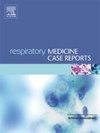A case of 8-year regression of intratracheal granulation due to tracheostomy cannula after local injection of triamcinolone acetonide
IF 0.7
Q4 RESPIRATORY SYSTEM
引用次数: 0
Abstract
Background
Granulations may form in the trachea during tracheostomy cannula placement, resulting in airway narrowing. Managing stenosis is difficult when the cannula cannot be removed. Herein, we report a case of long-term regression and maintenance of intratracheal granulation following local injection of triamcinolone acetonide (TA).
Case
A 14-year-old boy presented to our pediatric department with epilepsy and psychomotor retardation. He was born at 24 weeks and 4 days of gestation and weighed 705 g at birth. He underwent a tracheostomy for tracheomalacia at 1 year of age. At the age of 12 years, granulation formed at the tip of the tracheostomy cannula, resulting in severe tracheal stenosis, which was repeatedly managed using ventilator management and replacement cannulas. As bronchoscopic cauterization and removal of the granulation tissue did not improve the condition, triamcinolone acetonide solution was injected into the granulation tissue three times, which resulted in regression of the granulation. Thereafter, no restenosis has been observed for more than 8 years.
Conclusion
We encountered a case in which the local injection of triamcinolone acetonide into the intratracheal granulation caused by a tracheostomy cannula was very effective, and no regrowth of the granulation was observed for a long period of time, even though the cannula remained in place.
局部注射曲安奈德后气管造瘘致气管内肉芽肿8年消退1例
背景:气管造口术置管时,气管内可能形成肉芽,导致气道狭窄。当不能取出套管时,处理狭窄是困难的。在此,我们报告了一例局部注射曲安奈德(TA)后气管内肉芽长期消退和维持的病例。一名14岁男孩因癫痫和精神运动迟缓来到我们儿科。他在怀孕24周零4天出生,出生时体重705克。1岁时因气管软化行气管切开术。12岁时,气管造口套管尖端形成肉芽,导致气管严重狭窄,多次使用呼吸机管理和更换套管进行治疗。由于支气管镜下烧灼去除肉芽组织并没有改善病情,因此在肉芽组织中注射了三次曲安奈德溶液,导致肉芽组织消退。此后超过8年未观察到再狭窄。结论我们遇到一例气管造口插管引起的气管内肉芽肿,局部注射曲安奈德非常有效,即使插管保持在原位,很长一段时间内没有观察到肉芽肿再生。
本文章由计算机程序翻译,如有差异,请以英文原文为准。
求助全文
约1分钟内获得全文
求助全文
来源期刊

Respiratory Medicine Case Reports
RESPIRATORY SYSTEM-
CiteScore
2.10
自引率
0.00%
发文量
213
审稿时长
87 days
 求助内容:
求助内容: 应助结果提醒方式:
应助结果提醒方式:


